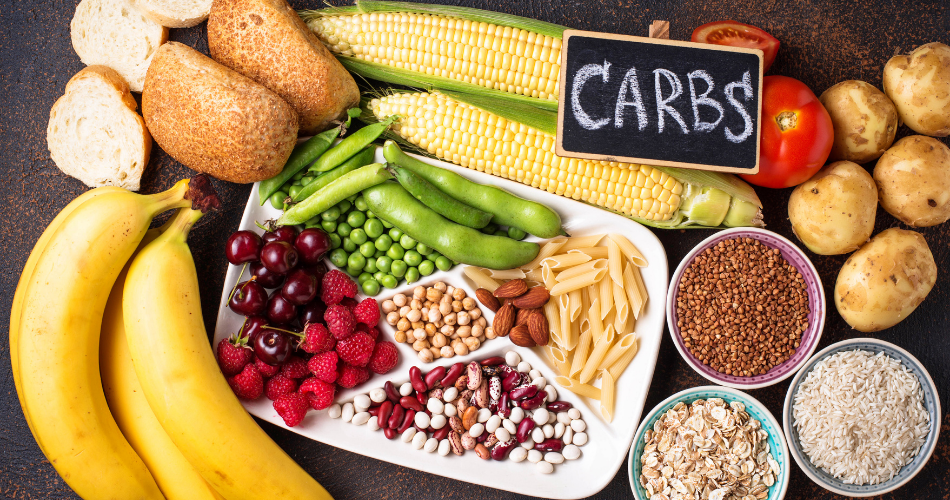Principles of Basic Nutrition
- BeWellAdmin
- May 23, 2023
- 4 min read
Updated: Jun 2, 2023
Nutrition can be a complex topic, with so many different components to pay attention to. After reading through this article, we hope that you feel more confident in your understanding of basic nutrition, specifically regarding the macronutrients (carbohydrates, lipids, protein) and water. Let's get started!
First off... Carbohydrates.
Carbohydrates, also known as carbs, include sugars, starches and fibres, and can be found in fruits, grains, vegetables and milk products. The body uses carbs to make glucose, which is the primary source of fuel for our muscles. Muscles utilize ready-available glucose to complete physical work. Glucose can be stored in the liver and/or muscles (as glycogen) for when it is needed by the body. Glucose is also the brain’s main source of energy, so it is incredibly important.
The recommended Minimum Typical Total Daily Carb Intake is 120-130g. This amount is based on the body's glycogen stores and the brain's glucose needs. This amount translates to approximately 45-65% of an individual's daily calorie intake. It is important to note that this is a general recommendation and may change on other factors such as level of physical activity.
Carbs are found in numerous foods, and some options are healthier than others.
Healthier Carb Sources: Carb-rich foods higher in dietary fibre that have undergone minimal processing are better for you. For example, we recommend consuming fruits, veggies, whole grains, legumes, and certain dairy products to ensure your body receives enough carbs.
Carb-based foods that contain little fibre and are high in added sugars should not be consumed frequently. These tend to be foods that have undergone more significant processing. Examples of these foods include packaged granola bars, muffins, cereals and mass-produced breads.
Source: CSEP-PATH. (2021). Section 2: Lifestyle – Behaviours & Health. CSEP Physical Activity Training for Health (3rd ed.).

Next ... Proteins.
Amino acids are the building blocks of all proteins. The are arranged in a variety of different ways to create proteins with different functions. Proteins are important for many reasons, as they help build and repair tissues, act as a source of energy for the body (after glucose is depleted), and regulate body metabolism.
Different people need a varying amounts of protein in their diets based on physical activity levels, age and sex. That said, it is typically recommended that 10-35% of daily calories are from protein sources. Below is a table adapted from Washington State University highlighting recommended protein intake based on physical activity level.
Sedentary Individuals
0.36 grams of protein per pound of body weight
Recreationally Active
0.45-0.68 grams of protein per pound of body weight
Competitively Active
0.54-0.82 grams of protein per pound of body weight
Proteins can be found in many foods, including dairy products (cheese, milk, yogurt), eggs, fish, legumes (beans, dried peas, lentils, soybeans), meats and poultry (beef, lamb, pork, veal, chicken, turkey), and soy products (tofu, soy milk). Here are some tips on how to make sure you are choosing healthy protein options:
Select lean cuts of meat most often.
Choose skinless poultry or remove the skin before cooking.
Enjoy beans and lentils more often.
Choose fish such as salmon, sardines and trout.
Select lower fat milk products.
Avoid processed meats.
Sources: Proteins - Government of Canada. (2019, January 22). Retrieved September 29, 2021, from https://www.canada.ca/en/health-canada/services/nutrients/protein.html
U.S. Department of Agriculture. Dietary Guidelines for Americans 2020-2025. Published 2020.

Moving on ... Lipids.
Lipids are organic compounds that are insoluable in water. They include fats, waxes, oils, hormones, and other things that act as energy-storage molecules in our body. We are going to focus on fats – which is the type of lipid you eat in your food! Fats in food serve as energy sources for our bodies because they have a high caloric density. They also help protect our organs and make up hormones.
The dietary reference intake for fat in adults is 20% to 35% of total calories from fat. That is about 44 grams to 77 grams of fat per day if you eat 2,000 calories a day. *note this is different if you are eating a different amount of calories in a day.
They also help protect our organs and make up hormones. There are three different types of fats; trans, saturated and non-saturated. It is recommended that trans and saturated fats are limited in the diet in order to focus mainly on non-saturated fats.
Trans fats
Beef, lamb
dairy products
liquid vegetable oils, such as canola and soybean oil,
hard margarines, vegetable shortenings
commercially baked goods like cookies
Saturated fats
dairy products (butter, cheese, whole milk)
beef, chicken, lamb, pork and veal
palm and coconut oil
lard and shortening
Non/Un-saturated Fats
Two types of non-saturated fats:
Polyunsaturated: nuts and seeds, salmon and trout, vegetable oils (corn, canola, soybean, flaxseed, sunflower)
Monounsaturated: avocados, nuts and seeds, vegetable oils (olive, canola, peanut, sesame, sunflower)
Source: Fats - Government of Canada. (2019, January 22). Retrieved September 24, 2021, from https://www.canada.ca/en/health-canada/services/nutrients/fats.html#shr-pg0

Finally...water!
While water isn't necessarily a macronutrient since it doesn't yield energy, it is still essential and is needed in large amounts! In its simplest form, it is composed of two hydrogen atoms and one oxygen atom. Water is required to transport essential nutrients all over the body, it helps transport waste products, it regulates body temperature, and it is required for chemical reactions. All cells and organs require water to function.
On average, adults should have around 2L a day. However, if you are in a hot climate or engaging in intense physical activity, more than 2L a day could be beneficial.
Drinking water throughout the day is the best way to get the correct amount, but some foods like cucumbers, tomatoes and watermelon also provide some water content.
Source: Libretexts. (2020, August 10). 1.1: Introduction to nutrition. Medicine LibreTexts. Retrieved October 1, 2021, from https://med.libretexts.org/Under_Construction/Purgatory/Book%3A_Human_Nutrition_(University_of_Hawaii)_1st_Ed/01%3A_Basic_Concepts_in_Nutrition/1.01%3A_Introduction_to_Nutrition.




Comments